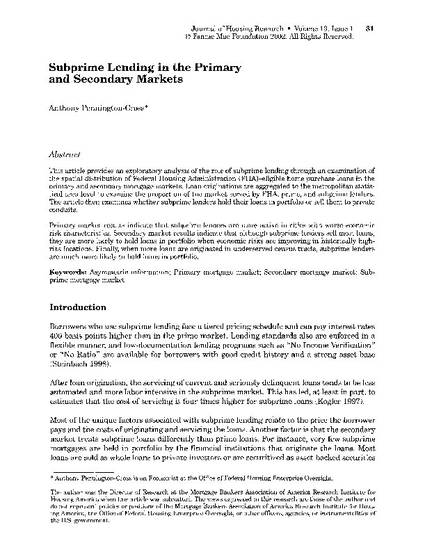
This article provides an exploratory analysis of the role of subprime lending through an examination of the spatial distribution of Federal Housing Administration (FHA)—eligible home purchase loans in the primary and secondary mortgage markets. Loan originations are aggregated to the metropolitan statistical area level to examine the proportion of the market served by FHA, prime, and subprime lenders. The article then examines whether subprime lenders hold their loans in portfolio or sell them to private conduits.
Primary market results indicate that subprime lenders are more active in cities with worse economic risk characteristics. Secondary market results indicate that although subprime lenders sell most loans, they are more likely to hold loans in portfolio when economic risks are improving in historically high-risk locations. Finally, when more loans are originated in underserved census tracts, subprime lenders are much more likely to hold loans in portfolio.
Available at: http://works.bepress.com/anthony_pennington_cross/39/

Published version. Journal of Housing Research, Vol. 13, No. 1 (2002): 31-50. Publisher link. © 2002 Taylor & Francis. Used with permission.
Anthony Pennington-Cross was affiliated with the Office of Federal Housing Enterprise Oversight at the time of publication.